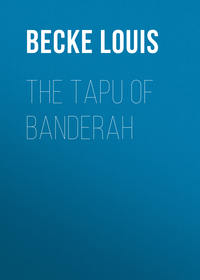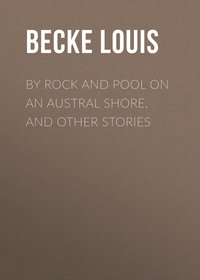 полная версия
полная версияThe Naval Pioneers of Australia
A return dated six months later shows that there were 23 merchant vessels owned, or constantly employed, in the colony, of a total tonnage of 660 tons, carrying crews numbering altogether 117. The vessels varied in size from the King George, of 185 tons and 25 men, to the Margaret, of 7 tons and 2 men.
In the year 1898 the royal naval forces in Australian waters make a squadron, under the command of a rear-admiral, consisting of 17 ships. Of these 15 (including 3 surveying vessels at present attached to the Australian station) are in commission, and 2 in reserve. The total tonnage of the vessels in commission and in reserve amounts to 31,795 tons, armed with the most modern weapons, and carrying crews numbering in the aggregate about 3000, while the naval establishment at Garden Island (so called because about a hundred and twenty years ago it was used as a vegetable garden for the crew of the Sirius) is now one of the most important British naval stations.
Seven of these war vessels belong to a special squadron, the maintenance of which is partially paid for by the colonial governments; and, by agreement with the Imperial Government, the ships are to be employed in Australasian waters solely for the defence of Australia and New Zealand. Besides this force, most of the colonial governments maintain a naval reserve of their own, highly efficient, perhaps, as a land force, but, owing to the lack of vessels and of money, scarcely to be considered seriously of value as a naval defence force.
The merchant shipping trade of Australia, measured by the entering and clearing returns from all Australian ports, now reaches about 18,000,000 tons annually, of which about one-third is entered or cleared from the ports of the mother-colony. The returns do not separate purely local tonnage from the other shipping of the British empire, but out of the above 18,000,000 tons some 16,000,000 tons are classed as British, and Australia as a whole contributes no mean proportion of that amount.
Here ends this account of the naval pioneers of Australia. We have already said that this work is biographical rather than historical. All that we have attempted is not to sketch the progress of the colony—as a colony, for the first twenty years of its existence, no element of progress was in it—but to show how certain naval officers, in spite of the difficulties of the penal settlement days, in spite very often of their own unfitness for this to them strange service, did their work well, not perhaps always governing wisely, but holding to ground won in such circumstances and by such poor means as men with more brains and less "grit" would have abandoned as untenable.
Arthur Phillip landed in a desert, obtained a footing on the land, and when he left it, left behind him a habitable country; Hunter and King followed him and held the country, though nearly every man's hand was against them, and the industrious and the virtuous among their people could be numbered by the fingers of the hand. Yet these men and their officers dotted the coast-line with their discoveries, and by what they wrought in the direction of sea exploration more than made up for what they lacked in the art of civil governing. Bligh honestly endeavoured in a blundering way to accomplish that which only the sharp lesson of his mistake made possible; Macquarie, backed by a regiment, began his administration with concessions, and continued for many years to govern the colony, chiefly for the benefit of the emancipists instead of for its officials. Whatever evils may have come of his methods, it has been said of him that "he found a garrison and a gaol, and left the broad and deep foundations of an empire." Such foundation was really laid by his successors, who encouraged the emigration of free men who presently demanded that Australia should no longer be used as a place of punishment, and its lands as a reward for felons; that it must be a British colony in the fullest and freest sense. It is to these men, marching forward upon ways cut for them by the naval pioneers, we owe the fulfilment of Phillip's prediction that "this would be the most valuable acquisition England ever made."
1
A leader of the Bar in New South Wales, an eminent Q.C. of the highest talent, has publicly declared (and every honest man agrees with him) that the existing land laws are unintelligible to anyone, lawyer or layman.
2
An Historical Journal of the Transactions at Port Jackson, etc., etc., by John Hunter, Esq., Post-Captain R.N. (London, 1793.)
3
A favourite rig of that period. A snow was similar to a brig, except that she carried upon a small spar, just abaft the mainmast, a kind of trysail, then called the spanker.
4
The Story of the British Army, by Lieutenant-Colonel C. Cooper-King, F.G.S. (Methuen & Co., 1897.)
5
The Duff was captured by the Bonaparte, privateer. Among her passengers were several ladies—wives of the missionaries—and at first the citizens of Monte Video classed them with the Lady Shore's female passengers.
6
After the battle of Copenhagen, Bligh, who commanded the Glatton, was thanked by Nelson in these words: 'Bligh, I sent for you to thank you; you have supported me nobly.'
7
Mrs. Nutting has here made a mistake in the distance traversed. Timoa is, of course, meant for Timor. (See page 246.)











